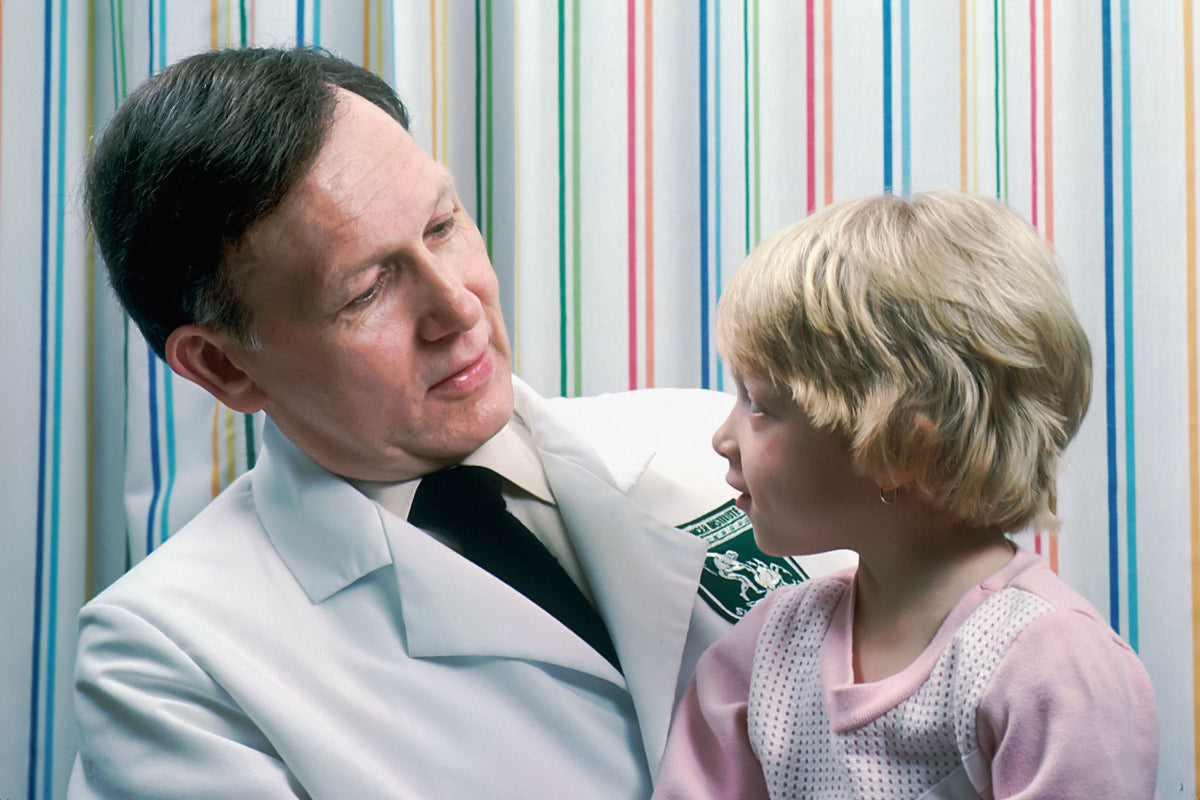
The entry into the world of “Food Allergy Parent” is often a jarring one. There’s been a reaction – sometimes it’s a mild one and sometimes it’s a big, scary one. Maybe it was a series of symptoms and you’ve been trying to figure out what’s triggering them.
Regardless of how you got here, you’re here now. You’ve made an appointment with an allergist your pediatrician or your friend recommended. You don’t know what to expect from this appointment, but you’re assuming it’s not your run-of-the-mill first check-up with a primary care physician. That bit of mystery may even be adding to your anxiety. Take a deep breath and then keep reading.
Pre-Visit
- Write down what you remember about your child’s suspected allergic reaction. What symptoms did she experience? What did she eat right before the reaction? How did you or the healthcare provider involved respond? Having notes will help you clearly communicate the experience and ensure you’re not overlooking or forgetting something that could help your allergist with a diagnosis.
- Keep a food (and other) journal. If you’ve got a little time before your visit, jot down what your child is eating, the laundry detergent you’re using, any lotions and soaps coming in contact with your son’s skin, pets he may engage with, and other potential allergic exposures. Also make note of any potential allergic responses throughout each day – runny nose, upset stomach, skin irritations, eczema flares, “allergic shiners” (aka: black circles under the eye), scratchy throat, and others. This may help your doctor draw connections between triggers you’re not noticing.
- When you make the appointment, ask about any restrictions on antihistamines or other medications prior to the visit. The same medications we use to treat potential allergic responses may interfere with test results and you may be asked to avoid them in the days preceding your visit.
Morning of Visit
- Pack an activity bag for your child. Allergy appointments can be long, especially if there’s testing involved. Whether you’re looking to kill time in the waiting room or waiting for skin test results to be read, having something to entertain and distract your child is a must. Do not, however, include snacks in this pack. Remember, even if the food you bring is assumed safe for your child, it may not be for others also visiting the practice that day. Your allergist may even prohibit food and drink in the office.
- Add your journal and notes to the bag. Make sure you have your current insurance card, too.
During The Visit
- Your visit will likely start off a lot like any other doctor visit you’ve had in the past. A nurse will check height, weight, blood pressure, and ask you some questions about the reason for your visit. The allergist will run through other basic well visit exam components like listening to your child’s lungs and heart, and checking your child’s ears, nose, and throat. She’ll ask some basic health questions and then more specific allergy-related questions.
- Your allergist will also complete a full health history. This is important: allergy testing alone is not an effective tool. In fact, as this article from FARE explains, “About 50-60 percent of all SPTs yield ‘false positive’ results, meaning that the test shows positive even though you are not really allergic to the food being tested.” That’s not to say testing is not valuable, just that it shouldn’t be the only indicator of an allergy. Your allergist will use your child’s health history, your notes on the reaction that prompted this visit, and, if you have one, the journal you brought to give context to results if they pursue testing.
- If the allergist determines testing is appropriate, she may begin with a skin prick test (SPT) and/or order blood work to confirm suspected allergens. As noted above, your doctor will consider the test results in the context of your child’s full health history and exam. Allergists up-to-date on current practices will likely only test for suspected allergens and not a broad panel. Remember, allergy testing is not an accurate tool for screening. Your doctor is using it to confirm suspected allergens based on the full exam.
Post-Visit
- If the allergist ordered blood work, the office may call you with the results or you’ll have a second visit scheduled to review them. Even if SPT tests were administered in the office, the doctor may still order blood work to establish a baseline for future testing. (Yes, your child will re-test at various points throughout their life to confirm there’s no change in their allergies.)
-
If your allergist prescribes an auto-injector of epinephrine, fill it immediately. Epinephrine is the drug form of adrenaline and it’s used to treat the symptoms of anaphylaxis. An auto-injector is pre-loaded with the prescribed dose of epinephrine and designed to quickly and effortlessly deliver that dose to a patient in an emergency. They are single-use, one-dose syringes. Your doctor will help you determine which device is best for you and give you specific instructions on when and how to use it.
The important thing to remember is that epinephrine is a life-saving drug and it should always be within reach of a person who has been prescribed it. Minutes matter. Failure to administer epinephrine in a timely manner can be the deciding factor of whether a patient survives a life-threatening reaction.
Regardless of whether you receive an EpiPen, AuviQ, or other autoinjector, you’ll receive a two-pack of injectors. These should be kept together and be with the allergic person at all times. If the first auto-injector fails to deliver the proper dose or if symptoms return before emergency medical care arrives on the scene, you may need to use the second shot. Your allergist will cover this in your allergy action plan.
Speaking of allergy action plan, your allergist will provide you with clear instructions on how to mitigate your child’s risk of a reaction. The plan will also include, however, how you should respond to suspected exposure to allergens or suspected reactions. A copy of this plan should be shared with anyone responsible for caring for your child – including day care and school staff.
Finally, make a follow-up appointment. Your doctor will tell you whether you need to come back in 12 months or sooner. Keep the appointment. For one thing, your epinephrine will expire in a year. You’ll need an appointment to get a new prescription. In addition, children attending school will need paperwork completed for school accommodations and health emergency plans.
